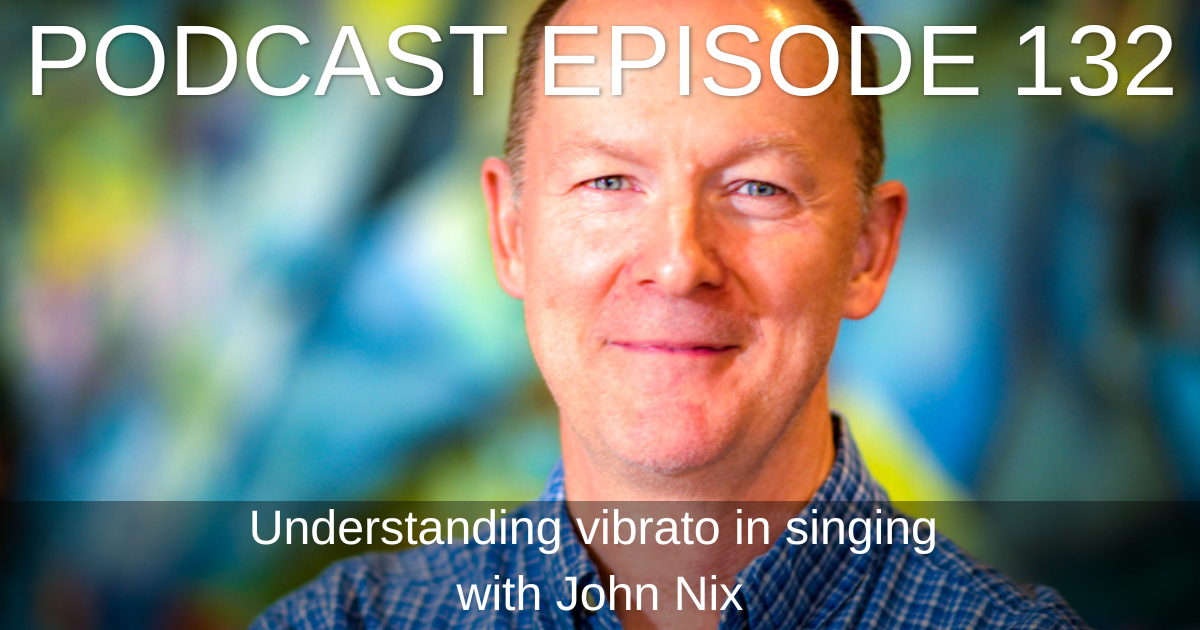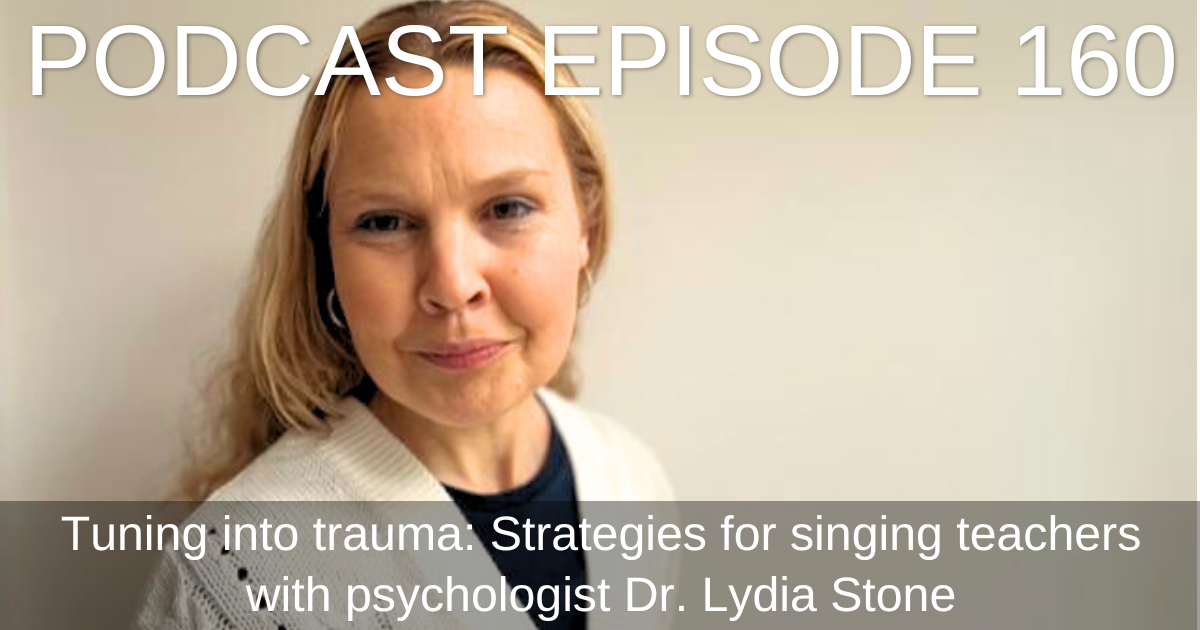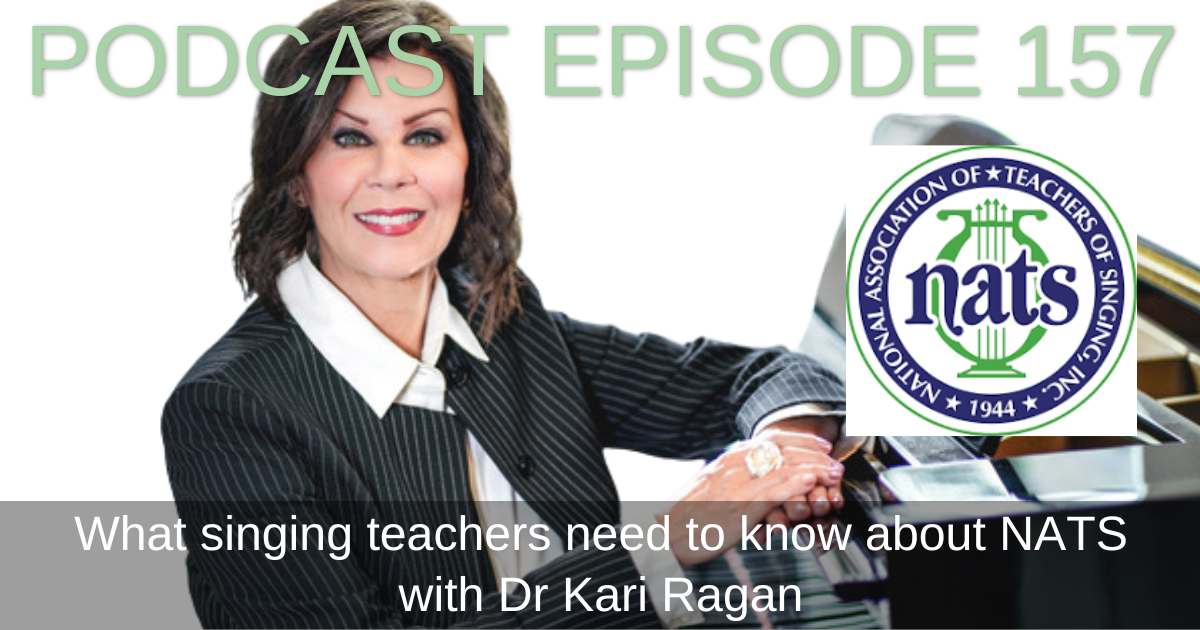Joining Alexa this week to discuss all things vibrato is Professor of Voice and Voice Pedagogy and Chair of Voice at the University of Texas at San Antonio, John Nix. John is a voice researcher himself, and his mentors include Barbara Doscher and Ingo Titze. John has produced 50 published articles and eight book chapters, co-chairs the Voice Science Advisory Committee, and serves on both the Journal of Singing and the Rowman and Littlefield/NATS book editorial boards.
KEY TAKEAWAYS
-
- Vibrato encompasses several components. Firstly, it involves the rhythmic modulation of the fundamental frequency, which translates into changes in perceived pitch. Secondly, it includes fluctuations in amplitude, affecting the perceived loudness or intensity. Lastly, vibrato introduces variations in timbre as harmonics traverse the resonant frequencies associated with vowel sounds, resulting in shifts in tonal quality.
-
- The rate of vibrato refers to how frequently the frequency oscillates, essentially measuring the speed of those pitch variations. Extent quantifies the range by which the pitch rises and falls, indicating the breadth of the oscillation. Vibrato jitter assesses the regularity of these cycles, gauging the consistency in the rate of vibrato.
-
- A regular, stable vibrato with moderate extent and rate indicates a singer’s improved balance and control, reflecting refined vocal technique and skill.
-
- Respiratory Vibrato originates from variations in the breath pressure from the lungs controlled by singers managing their diaphragm to create fluctuations in airflow. Abdominal Vibrato is produced by controlled abdominal muscle contractions. Laryngeal Vibrato occurs due to oscillations in the tension of the vocal cords themselves.
BEST MOMENTS
‘Vibrato extent is measured in cents not hertz because that confuses it with rate’
‘The vibrato esthetic has become more international than regional over time’
‘Heightened emotion imprints itself upon our voice through the tremulousness’
‘It’s easier to target something slower than your natural rate’
EPISODE RESOURCES
Website:
Contact John Directly!
Relevant Links & Mentions:
-
- Research/Researchers mentioned: Carl Seashore; Ingo Titze; Joshua Glasner; Iwata & Large; Thomas Shipp; Paul Patinka; King & Horii; C. Dromey; Dr Jenevora Williams; David Howard; Graham Welch; Eric Prame; Randy Wooding
-
- Voce Vista: vocevista.com
-
- Journal of Singing: nats.org/cgi/page.cgi/about_journal_singing.html
-
- (Article) Shaken, Not Stirred: Practical Ideas for Addressing Vibrato and Non Vibrato Singing in the Studio and the Choral Rehearsal by John Nix
-
- Oren Brown
ABOUT THE GUEST
John Nix is Professor of Voice and Voice Pedagogy and chair of the voice area at the University of Texas at San Antonio. His mentors include Barbara Doscher (singing, pedagogy) and Ingo Titze (voice science). Current and former students have sung with the Santa Fe, Arizona, Chautauqua, St. Louis, Nevada, Omaha, Utah Festival, and San Antonio opera companies, and two have served as NATS Intern Program Master Teachers. In addition to his active voice teaching studio, he performs research in voice pedagogy, literature, and acoustics, having produced 50 published articles and 8 book chapters; he also co-chairs the NATS Voice Science Advisory Committee, serves on The Journal of Singing’s editorial board, and serves on the Rowman and Littlefield/NATS book editorial board.






